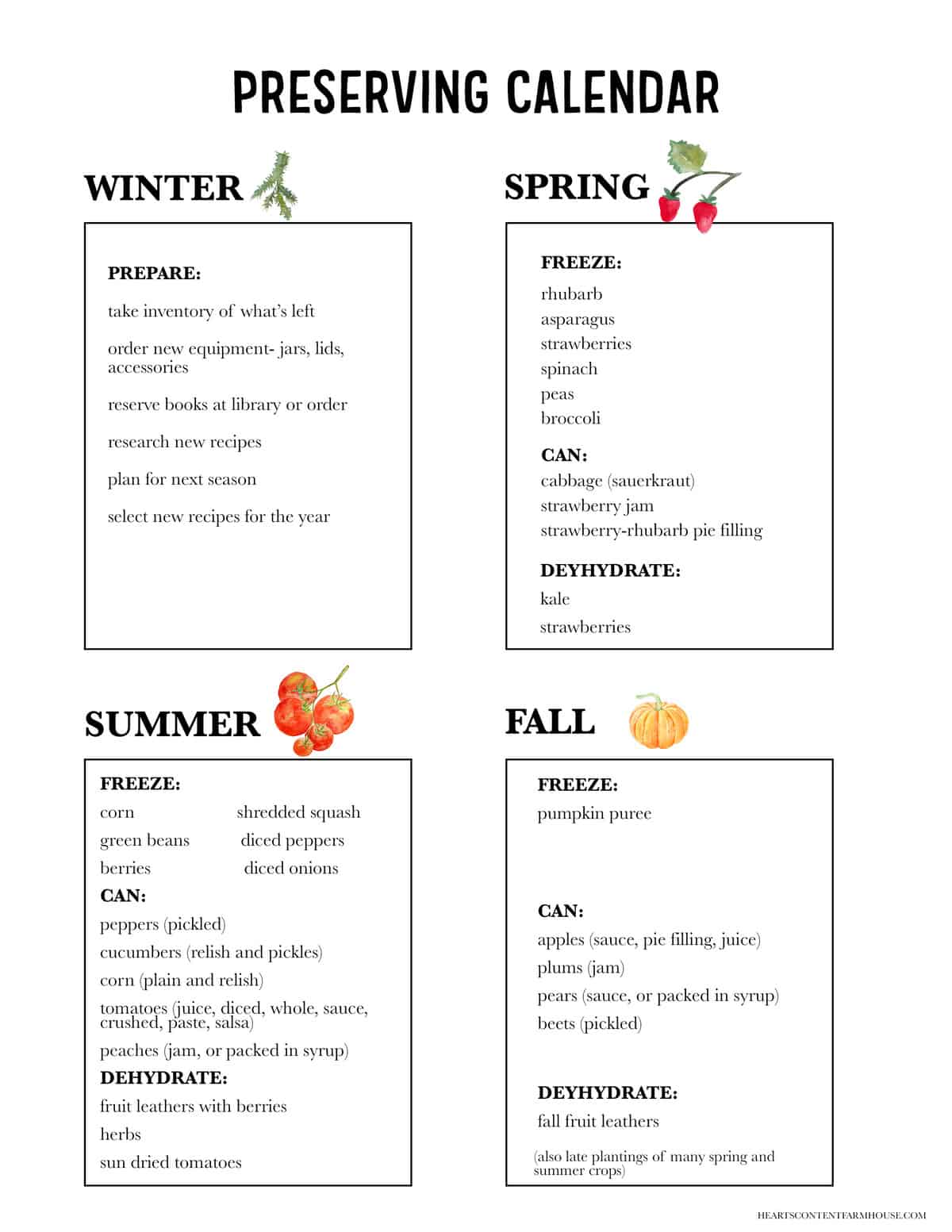A Canning Season Calendar
Inside: How to plan for a year of seasonal living with a canning season calendar. The work of your gardening and preserving will ebb and flow. Here’s what to expect.
Seasonal eating is a beautiful concept, but without preserving your harvest you won’t get very far. This is why you have to think of canning season as a year-long concept. In December you’re eating the tomatoes you canned last summer, but you’re also picking out canning tomatoes to plant. In July you’ll harvest new onions just as you finish the last of onions from the year before.
So let’s go over what you’ll do when, and how to be ready for each stage of food preservation.
A Newsletter you’ll love
Daily recipes from the farmhouse, Sunday meal plans, seasonal ideas, straight from my kitchen to your inbox.
I promise to keep your email address safe. Unsubscribe at any time
Remember to be flexible. Sometimes, the garden doesn’t do as well as you thought it might, or you get an unexpected gift from someone else’s garden. Don’t be too attached to your plan… it rarely works out perfectly.

Stage One: Brainstorming + Wish List
Plan to can what you eat! Pick a combination of what you want and what you need.
This sounds easy, but just like with gardening, people plan things that don’t actually make any sense. Jams especially! They all sound delicious. But how many jars of jam can one really eat in a year? Yes, they make nice gifts, but you will also find that many people are nervous about home-canned food and won’t actually consume them.
That doesn’t mean you shouldn’t try new things or make yummy treats. But the staples you purchase should be the same staples you can.
When in doubt, plan to can something very simple. (For example, crushed tomatoes instead of pizza sauce. You can always find a way to use an ingredient, but not always a finished product.)
Look through cookbooks and trusted websites and mark down things you would like to try. Some of my favorite canning cookbooks are The Blue Chair Jam Cookbook and this broader cookbook from America’s Test Kitchen.
When you are looking for ideas for new recipes, don’t worry too much about whether you grow the produce needed. You can get it at your farmer’s market. If you like the recipe, work what you need into your plan next year. But don’t waste valuable space on something unproven.
Stage Two: Recipes + Planning
Once you have your wish list, get ready to make it happen when the time comes. It’s amazing how quickly you will have a pile of produce that needs to be preserved right away. Life will be easier if you are prepared with whatever you need. Besides the obvious things like equipment, jars, lids, and rings, you may need a lot of pantry ingredients like pickling salt, pectin, TONS of sugar, or citric acid.
I find it much easier to have them in my house far in advance. Often, you will find that when you suddenly need citric acid, so does everyone else, and the stores are out. If any of your jars are chipped, you can’t use them for canning that requires a seal. But you can still use them for many other things in your kitchen.
You may want to look over a simple canning season calendar (there is one printable you can download in this post) to remind you of what will be in season when. So when you are excited to get started and are wondering what you can preserve in spring, you will have ideas read
Or visit one of these resources:
- The Seasonal Food Guide , enter your zip code and it will give you a seasonal overview.
- Find your local agricultural extension who can give you very detailed information.
- Great source for safe recipes.
Make sure you have a good place to store your canning equipment. A lot of it is bulky, but you can store lids and accessories inside the canner itself.
And finally, make sure you have a good place to store your actual canned goods! They don’t need to be in your kitchen, and a walk-in pantry is NOT necessary. Your basement is totally fine, on a simple shelf.
I find it easier to have shallow shelves so things don’t get lost behind each other
Stage Three: Do The Work
This part of the canning season calendar is fun…but hard. It’s time to actually do the work!
When a recipe is a success, write it down carefully or save it in some way. Canning recipes are mostly similar and it is hard to find the exact one you used by searching online. (The printable has recipe sheets that you can use if you would like.)
As I finish something, I also like to write it down on an inventory sheet for the year. This is mostly just to motivate myself and be able to look back at the end of the season and see all that I’ve done. It is also helpful when you run out of something in January and can see how much you put away and adjust the amount for next year.

Finally, make sure you eat what you’ve preserved! (Does this sound obvious?). But don’t forget about it, which can especially happen with frozen things.
If there is something that no one likes, deal with it right away. Compost it or give it to your livestock, if you have any. And then wash the jars and store them. Letting an unpopular item linger in storage will not improve it, and eventually it will seem gross and scary and you’ll end up throwing away the whole jar. (Can you tell I’ve done this many times?). Make sure you write down that recipe as a NEVER AGAIN.
As your supplies dwindle, gardening season will be coming back. It’s time to do it all again!
A Canning Season Calendar (What You’ll Do When)
Of course, the month will vary based on where you live. I am in Zone 7.

Don’t forget about what worked and didn’t work last year
January- March
- Take stock of what you needed more of or made too much of
- Stock up on new lids
- Check stock of jars and bands
- Stock up on pectic/ citric acid/ Cleargel
April
- Harvest cabbage – make sauerkraut
- Harvest broccoli – freeze
- Harvest early greens (spinach + arugula) – use fresh, you’ll have plenty more later
May
- Harvest asparagus – can, make pickled + peppered asparagus stems
- Harvest strawberries – make jam, preserves, pie filling, dry freeze whole berries
- Harvest rhubarb – dice and freeze, make strawberry-rhubarb jam and fillig
- Early herbs- use fresh
- Early peas – can or freeze (they’re better frozen!)
June
- Harvest green beans – can, make dilly beans
- Harvest new potatoes – use fresh (use later potatoes for preserving)
- Harvest summer squash and zucchini – can sliced, make squash relish
- Harvest onions- use in relishes, dice and freeze
July
- Harvest corn – freeze plain, can corn relish, pressure can plain
- Harvest blueberries – make jam, pie filling, freeze whole berries
- Harvest peaches – jam, preserves, pie filling, can sliced or diced
- Harvest tomatoes – can whole, crushed, sauce, salsa
- Harvest peppers – make pickles, pepper jelly, hot sauce, roast and freeze, dice and freeze
- Harvest cucumbers – make refrigerator pickles and relish
- Harvest basil – make pesto and freeze
August
- Harvest apples – make applesauce, pie filling, apple butter, juice
- Harvest tomatoes – make sauce, ketchup, paste
- Harvest garlic – clean and cure for storage
September
- Harvest fall greens (kale, collards, mustard greens) – can or freeze
- Harvest sweet potatoes – can, make sweet potato pie filling
- Harvest winter squash (pumpkin, butternut, acorn) – can puree, make soup, pie filling
- Harvest late-season tomatoes – more basics
- Harvest pears – can, pear butter
October
- Harvest cranberries – cranberry sauce, cranberry relish
- Harvest Brussels sprouts – freeze or roast
- Harvest root vegetables (beets and carrots) – can or store in a cool place
- Harvest pumpkins- make puree and freeze
November- December
- Keep things organized!
- Citrus- marmalades, curds
- Pineapple- can plain
How to Use the Planner
Canning is a way to preserve the best of each season, capturing the flavors of sun-ripened fruits and vegetables at their peak. But even more than that, it’s a chance to connect with the natural rhythms of the earth and enjoy delicious, home-cooked meals throughout the year.
Love,











Thank you so much for the canning information and printables, I can’t wait to get started.
Hey Mary, thank you so much for your kind words! I’m so glad you found the canning information and printables helpful. It’s such a fun and rewarding process, wishing you lots of success with your canning adventures! Happy canning!
I did not see the link for the planner. Is there another way I can receive it? Thank you for all your hard work!
hi susan, there should be a box to click/ spot to enter your info and then it get emailed to you
Thank you for making this process easier. May God bless you for your efforts.
Thank you Katie for this post.
I didn’t see a link for the planner
Hi Rose, it’s something you enter your email address for, you should be a box with an image of a binder, a spot for your email, then a red button below. if you can’t find it i can add your email manually if the one you entered here is the one you want to use.
Is the planner still available? I don’t see a download link.
yes I’m sorry something weird happened to it! there should be a green image showing now, if you click on that you can enter your email address and have it sent over 🙂
You ladies all make me want to do canning like my gramma in the 70s – Im sold – I will get a kit to try it – with your help- thank you for that- godbless you ladies
???? you will love it! lots of work, lots of reward
This is such a great idea! Planning ahead might help you avoid those late night canning sessions when you have foods from your garden to process and no other time to can. We find ourselves kind of “winging it” but we might try to be a little more planful this season. Thanks for your post!
So glad you enjoyed it. Yes I have done those late night sessions too… not my favorite
oooh sometimes I despise canning! I think it was from years of just having little ones underfoot with no big kids to help. It was so hard then! I am better with it now, but it is still not my favorite! Thank you for the planner, perhaps that will help my attitude!
My husband needs your advice. We are going to have five years worth of tomatoes. I’m forwarding this post directly to him!
Pinning this info for later when I finally have a garden to call my own! great resource!
These are fantastic resources! The lemon curd sounds totally amazing!! Yummy!!
Love this post! I enjoy canning fresh produce in the summer too!
Wonderful post! I think planning ahead would sure help not feeling overwhelmed.
Yes great point! When I get overwhelmed I start hating the whole process.